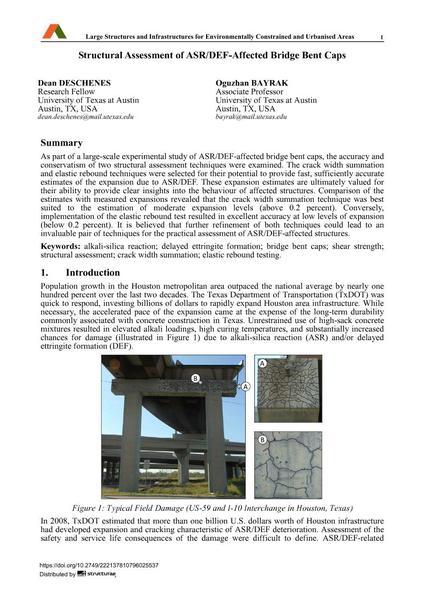Structural Assessment of ASR/DEF-Affected Bridge Bent Caps

|
|
|||||||||||
Détails bibliographiques
| Auteur(s): |
Dean Deschenes
Oguzhan Bayrak |
||||
|---|---|---|---|---|---|
| Médium: | papier de conférence | ||||
| Langue(s): | anglais | ||||
| Conférence: | IABSE Symposium: Large Structures and Infrastructures for Environmentally Constrained and Urbanised Areas, Venice, Italy, 22-24 September 2010 | ||||
| Publié dans: | IABSE Symposium Venice 2010 | ||||
|
|||||
| Page(s): | 478-479 | ||||
| Nombre total de pages (du PDF): | 8 | ||||
| Année: | 2010 | ||||
| DOI: | 10.2749/222137810796025537 | ||||
| Abstrait: |
As part of a large-scale experimental study of ASR/DEF-affected bridge bent caps, the accuracy and conservatism of two structural assessment techniques were examined. The crack width summation and elastic rebound techniques were selected for their potential to provide fast, sufficiently accurate estimates of the expansion due to ASR/DEF. These expansion estimates are ultimately valued for their ability to provide clear insights into the behaviour of affected structures. Comparison of the estimates with measured expansions revealed that the crack width summation technique was best suited to the estimation of moderate expansion levels (above 0.2 percent). Conversely, implementation of the elastic rebound test resulted in excellent accuracy at low levels of expansion (below 0.2 percent). It is believed that further refinement of both techniques could lead to an invaluable pair of techniques for the practical assessment of ASR/DEF-affected structures. |
||||
